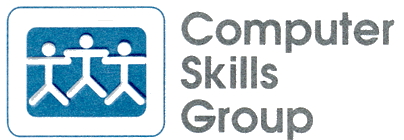

Have you ever noticed that in some applications, there are single characters underlined in menu titles? Some popular companies who use this feature in their application software include Microsoft, Symantec (Norton), Adobe, Netscape, and RealPlayer. Let's use the main menu bar for Word as a perfect example. The Word main menu contains the follow selections: File, Edit, View, Insert, Format, Tools, Table, Windows, and Help, in that order. For all but two of the choices, the leading character of each word is underlined. For the menu items "Table" and "Format", the "a" and "o" are underlined, respectively. Have you wondered what the underlines are for, or how they work?
What they indicate is that a keyboard shortcut is available for selecting the option. Why would you want to use these keyboard shortcuts instead of your mouse? Easy. First, you don't have to memorize them as they are displayed on your screen at all times. But the real reasons are that fast typists can type faster than reaching for a mouse and people who use an application day-in and day-out tend to memorize the most useful key combinations, and use them. If you add to the list the probability that your mouse will someday stop working, always at just the wrong time, there is a reason for all PC users to learn how this is done. In our example, we want to save our work and exit gracefully . . . but how?
Here's how -
There is only one trick to doing this, and I'll tell it to you right up front.
The trick is, you must hold the "Alt" key down until the entire series of menu selections has been made.
Let's take an easy example to illustrate the point.
Suppose we are in Word and have a document open at the time our mouse stops working.
To close the document, we press and hold down the "Alt" key.
Looking at the File option, we see the "F" is underlined and we press that key to open the next level of menu (case doesn't matter, so capital "F" or small "f" can be used).
A second menu pops open.
From the second menu, we see the letter "a" is underlined for the menu choice of "Save As".
Still holding down the "Alt" key, we hit the "a".
A new menu pops open which will guide us through saving the file.
We release the "Alt" key and complete the file save step.
Next, we want to exit from Word, closing the application. We press and hold down the "Alt" key for the second time, this time pressing "F", followed by "x". The Word application closes. We have saved our work and closed the application, all without touching the mouse.
Virtually all menu selections can be done this way. Try it. It's painless, and someday, you'll want to know how to do it.